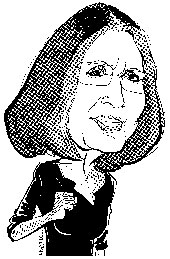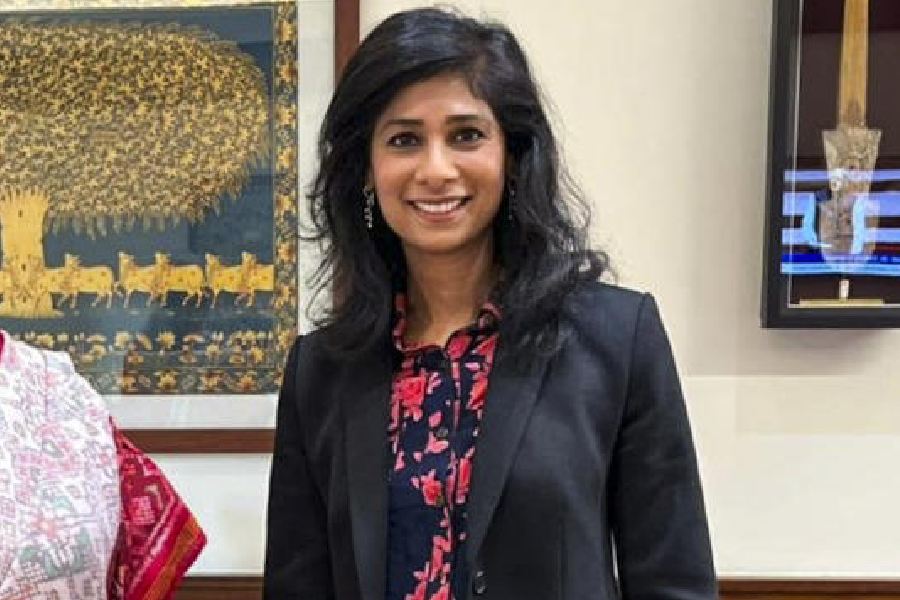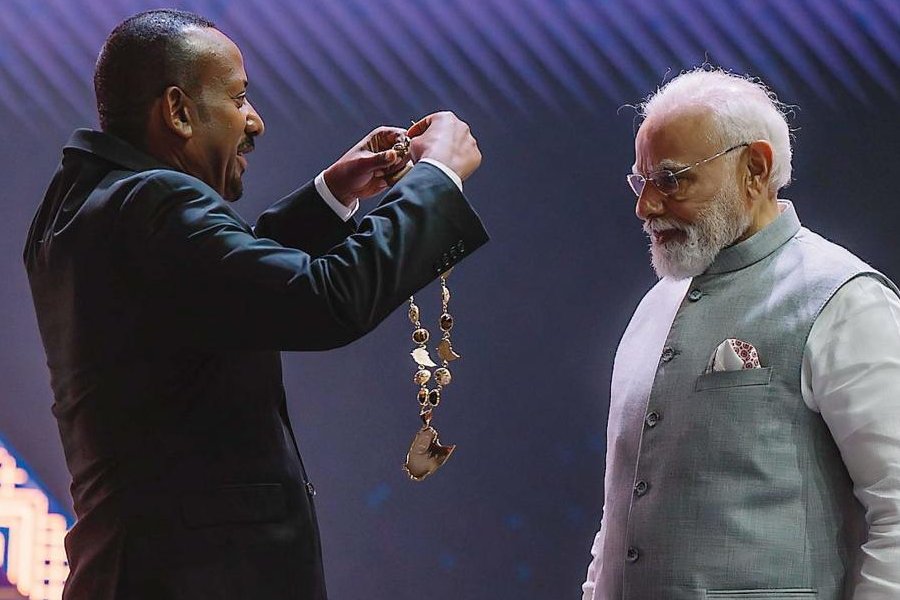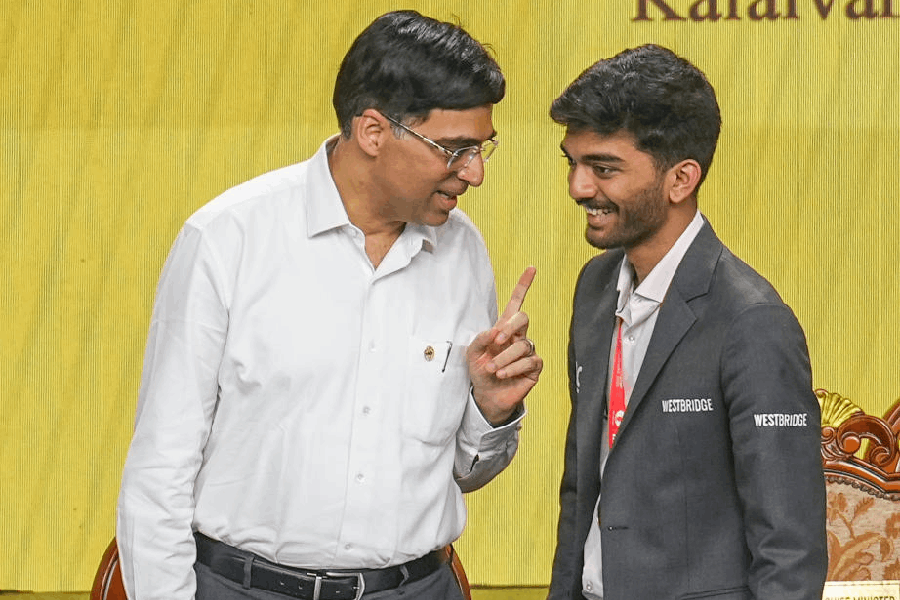 |
What do you expect when you go to meet a feminist icon like Gloria Steinem? Well, maybe you expect to discuss deep thoughts on feminism with her. What you don’t expect is her smashing good looks. Yes, even at 73, Gloria Steinem looks gorgeous. Tall, willowy and glamorously dressed in black, she wears her white-rimmed, smoky blonde hair loose, and sports an armload of funky silver bangles. Her striking face lights up when she smiles — and she does smile often.
Looking at her now it’s easy to see why she was dubbed the beautiful face of feminism in the 1960s and 70s. But tell her that and Steinem, the founder of Ms magazine, is likely to bristle. “It’s a description that makes me mad. It means that no matter how hard I work, I’ll always be judged by my looks,” she says.
To be fair to Steinem, she does work hard. In addition to her numerous journalistic writings and lecture tours espousing the cause of women, she has authored a number of books, and even now travels the world to take her message of equal opportunities for women everywhere.
But hasn’t feminism run out of steam a bit, at least in the West, I ask her. Isn’t the women’s movement losing focus in the avalanche of such diverse — and bewildering — tendencies as eco-feminism, third-wave feminism, post-postcolonial feminism and so on?
Not at all, says Steinem. We are sitting at the Topsia centre of Apne Aap, a non-governmental organisation that works to fight against trafficking in women. Outside, the noonday traffic around Number 4 Bridge roars by incessantly. Earlier in the day Steinem had given a talk at Calcutta’s American Center on how women confront the demand for trafficking. It turned out to be a tame homily — not at all the firecracker speech you’d expect from a woman who is credited with such whiplash aphorisms as “a woman needs a man like a fish needs a bicycle”.
But now, as I get up close with her, and she sits munching from a box of Kookie Jar snacks (she hasn’t had time for a proper lunch), Steinem is gloriously upbeat about the future of feminism in the 21st century. “To those who say that feminism is on the decline, I’d say it’s wishful thinking,” she states, her face breaking into a smile. “In fact, it’s a majority movement now — as much as 60 per cent of American women self-identify as feminists today.”
If there is a difference between then and now, it’s just a matter of progression, she feels. “We were fighting for safe and legal abortion, for equal pay…It was a naming problem then, addressing issues that had no names — issues like domestic violence, sexual harassment. These things are still being fought — under various labels, but all under the umbrella of women’s freedom.”
She also denies that there’s any particular schism between feminists of her generation and those of today. If at all there is a conflict, she says, it’s because the latter tend to be influenced by the media image of their forbears. “For instance, just because we were against exploitative sex, the media portrayed us as being against sex itself. And modern feminists tend to believe that sometimes. But we weren’t against sex!” she exclaims. “I mean, I was running around with a button that said C * *T POWER!”
Hmm. Well, though she may now sound a tad glib and simplistic when she talks about women’s issues, there’s no denying that in the late 60s, when the US was heaving under the civil rights movement and anti-Vietnam protests, Steinem, along with others of her sorority like Betty Friedan, Kate Millet, Bella Abzug, etc, fought for legal and social reforms that would free women from their traditional gender roles. (And, of course, in the process, they made feminism the newest F-word in the male lexicon.)
Interestingly, there is an India connection to Steinem’s life as an activist. In 1957, after graduating from Smith College, Massachusetts — she was born in Toledo, Ohio — she came to India on a fellowship and stayed on for nearly two years. “I stayed at Miranda House in Delhi,” she reveals with a smile. She also sojourned in Calcutta for a while and travelled down the east coast of the country. The India experience gave her a direction in her life, says Steinem. “I had thought my own country and its practices were the norm. Now I knew it wasn’t so.”
Back in the US, and trying to make her bones as a journalist, she first shot into the limelight when she did an exposé on the life of Playboy Bunnies — those skimpily clad waitresses in their ridiculous ears and tails — at Hugh Hefner’s Playboy Club in New York. She went to work as one of them and then did a story titled “I Was A Playboy Bunny”. Though this was her first brush with fame, she regretted the episode later. “It was a career mistake,” she says. “I was just beginning to be taken seriously as a journalist. But after the story, people started introducing me as the ex-Bunny.”
Of course, as a woman she often faced discrimination anyway. Steinem recalls how, when she went to meet a male editor of Life magazine about a writing assignment, he took one look at her and shot back, “I don’t want a pretty face here wanting to be a writer. Get out!”
It was partly to stamp out such discrimination that she jumped into the women’s movement in the late 60s. Of course, there were larger issues at stake as well — the demand for legal abortion, equal opportunities at work, equal pay, and so on. When she co-founded Ms magazine in 1972, it was a revolution in itself. For it was the first women’s magazine that treated women as having concerns other than cooking, knitting, and housekeeping. Steinem was an editor at Ms for 15 years. And though the magazine has changed hands since then, she serves it as a contributing editor even today.
Since she has always held reproductive freedom — the right to have a child or not — central to women’s emancipation, I ask her what she thinks of women celebrities who rhapsodise about the blinding joys of motherhood. Are they not reinforcing the idea that having a baby is the greatest fulfilment of a woman’s life?
“Yes, there is a certain pressure to conform to that idea,” she admits, but stops short of saying that women may contribute to that pressure themselves. On the contrary, she firmly believes that most women would really like a choice here. “I was in Mumbai in February this year, addressing some women from a slum area,” she says. “They asked me if I regretted not having a baby. ‘Not for a millisecond,’ I told them. And they applauded. That shows that a lot of women would like to exercise that choice, but cannot because of the social pressure.”
For her, though, social pressure was something that had ceased to exist in that roiling, liberating time called the 60s. And though she fought against male domination, she claims to have been lucky in her personal relationships with men. “I’ve always had wonderful relationships with men. In fact, now I am friends with all my former lovers,” she chortles.
But why did she marry environmentalist David Bale at the age of 66 after spending a lifetime criticising the institution of marriage? “Oh, we worked for 30 years to make marriage more equal,” she says airily. “I didn’t have to give up anything — not my name, identity, my credit rating, nothing.” However, David Bale died just three years later in 2003 of lymphoma of the brain. And today, Steinem lives alone in New York with her pet cat and dog and lots of houseguests who keep coming and going.
She is now busy finishing a book about being on the road as an organiser in America for the last 35 years. But if there’s one thing that consumes her more than anything else right now, it’s the need to overthrow George Bush. “He’s been a disaster,” she says. “It’s because Americans tend to elect their Presidents from such a small group — white, male, etc etc — that we have this idiot in the White House!”
So is she rooting for Hillary Clinton? “Yes, she is a brilliant woman,” says Steinem, who believes with her liberal heart that the US is now truly ready to elect a woman President.
Clearly, age has not dimmed her political activism either. Indeed, Steinem comes across as refreshingly candid and matter-of-fact about ageing itself. “Turning 40 was fantastic,” she says. “Fifty was difficult only because I wanted to keep on doing the same things I had always done. It took me a while to realise that doing the same thing is not progress. But turning 60 was great — it was like entering a free space.”
And turning 70? “Well, that makes you think of mortality,” she says, a sombre note creeping into her voice for the first time. “But I want to live to be a 100!” she exclaims, laughing again.










